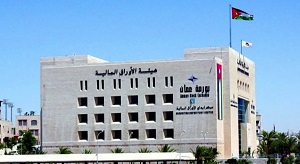Amman Stock Exchange hits its highest level in 17-year

AFP
AMMAN — The Amman Stock Exchange (ASE) surged on Monday to its highest level in 17 years, closing at 3,423.34 points, up by 1.66 per cent, marking the strongest performance since October 2008, when the index last broke the 3,400-point barrier before the onset of the global financial crisis.
Market analysts say the rally reflects a steady improvement in investor sentiment and a gradual recovery of confidence in the Kingdom’s economy, supported by monetary and fiscal stability as the government prepares to finalise the 2026 budget, according to the Jordan News Agency, Petra.
Trading activity also strengthened notably, with turnover reaching JD13.8 million, a sign of renewed liquidity and rising investor appetite after months of cautious trading.
The surge was driven by solid third-quarter earnings from listed companies, whose combined profits rose by around 11 per cent to nearly JD1.7 billion. Investors responded by increasing their positions in leading stocks, particularly in the banking and energy sectors, both of which have shown resilience and consistent operational gains.
Government fiscal discipline has also played a key role in boosting confidence, with data from the Ministry of Finance indicating a slowdown in public borrowing, reinforcing optimism about Jordan’s commitment to balancing fiscal prudence with growth stimulus in the budget of next year.
The continued stability of the Jordanian dinar and the steady monetary policy of the Central Bank of Jordan have further enhanced the ASE’s attractiveness as a safe investment destination amid regional uncertainties.
In parallel, recent regulatory reforms by the Jordan Securities Commission have strengthened market transparency and corporate governance.
The new measures, introduced over recent months, have improved disclosure standards and investor protection, helping reduce short-term speculation and fostering a more stable investment environment.
Observers expect the positive momentum to extend into the fourth quarter of 2025, buoyed by expectations that the 2026 budget will strike a balance between fiscal restraint and pro-growth measures. The CBJ is also anticipated to maintain its cautious policy stance, keeping inflation in check and preserving currency stability, conditions that could draw further capital inflows in the year ahead.
With these developments, the ASE appears to be reclaiming its position as a mirror of the national economy, reflecting policy stability, renewed confidence, and a gradual shift in market sentiment from hesitation to optimism.




